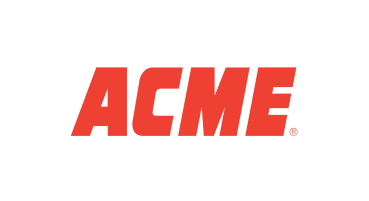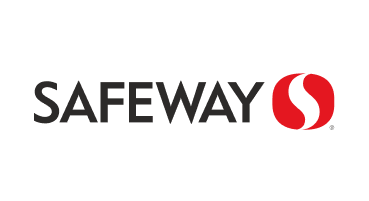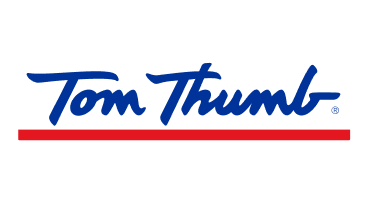6 Smart Ways to Cut Back on Sodium



Foods to Avoid to Cut Back on Sodium
Most of us don’t need to cut out salt completely. But it’s a good idea to pay attention to how much added salt is in your diet so you can help protect your heart.
Your muscles and nerves need sodium (salt) to work as they should.[i] This essential nutrient also balances body fluids like sweat and urine.[ii] But you only need a small amount of sodium every day to stay healthy.[iii] And most of us—an estimated 9 in 10 Americans—get too much.[iv]
Excess salt in your diet can raise blood pressure, increasing the risk for heart disease and stroke—the top leading causes of death in America.[v]
It’s not just the saltshaker on your kitchen table you need to pay attention to. Many foods—some of them surprisingly sweet—have more salt or sodium than you might realize. That’s because salt adds flavor to foods.[vi] It also acts as a preservative and helps bread and baked goods rise.[vii]
The difference between sodium and salt
Sodium and salt aren’t exactly the same thing.
- Sodium is a naturally occurring mineral and a key chemical element that makes up salt.[viii]
- Table salt is made up of 40% sodium and 60% chloride.[ix] Sodium chloride is the chemical name for table salt. Most of the sodium you get in your diet comes from salt.[x]
How much sodium or salt should you have every day?
The Dietary Guidelines for Americans recommend adults get no more than 1 teaspoon of table salt per day (that’s less than 2,300 milligrams of sodium).[xi] The recommended intake is even lower for children younger than 14.[xii]
The reality: Most adults get about 3,400 milligrams of sodium every day.[xiii]
How to cut back on sodium
Reducing sodium intake by at least 1,000 milligrams a day can improve your heart health.[xiv] Doing so requires a little more effort when shopping for groceries and preparing meals. But in time, making lower sodium choices will become second nature.
Follow these 6 tips to get started:
1. Face the (nutrition) facts
The Nutrition Facts labels on products can help you select lower-sodium items. When reading the label, pay attention to:
- Percent Daily Value (%DV): This number shows how much sodium each serving contributes to your total daily diet. The general rule is to choose low-sodium products that contribute 5%DV or less per serving.[xv] Limit high-sodium foods or drinks that contribute 20%DV or more sodium per serving. [xvi]
- Serving size: The sodium amount on a Nutrition Facts label is based on 1 serving. You’ll need to multiply the sodium amount by 2 (or more) depending on how many servings you have.
2. Get savvy about sources of sodium
Most of the sodium in our diets comes from packaged foods or restaurant meals—not the saltshaker.[xvii]
The top 10 sources of high sodium in your diet may include:[xviii]
- Breads and tortillas
- Chips and crackers
- Condiments like ketchup, mustard, and mayonnaise
- Desserts
- Grain-based dishes , including rice and pasta
- Pizza
- Protein sources, including beef, poultry, seafood, and lunchmeat
- Sandwiches and burgers
- Soups
- Vegetables, such as celery, beets, and spinach[xix]
3. Understand low-sodium and salt-free claims
Food products can make different claims about sodium content. Here’s what those claims mean:[xx]
- Salt-free or sodium-free: Less than 5 milligrams of sodium per serving.
- Very low sodium: Less than 35 milligrams of sodium per serving.
- Low sodium: Less than 140 milligrams of sodium per serving.
- Lightly salted (light in sodium): At least 50% less sodium than the regular product.
- Reduced sodium: At least 25% less sodium than the regular product.
- No-salt-added (unsalted): The manufacturer didn’t add salt, but the product may naturally have salt or sodium.
4. Find salt-free ways to add flavor
Use spices and other ingredients to add flavor to foods without sacrificing taste.[xxi] You can flavor foods with:[xxii]
- Garlic
- Herbs
- Lemons or limes
- No-salt seasoning blends
- Spices
- Vinegar
5. Eat more meals at home
Preparing meals at home gives you more control over how much sodium is in each dish. These steps can help:[xxiii]
- Cook with fresh or frozen meat not packaged in saltwater (brine).
- Select fresh or frozen vegetables over canned ones.
- Drain and rinse canned vegetables and beans to reduce sodium by up to 40%.[xxiv]
- Gradually cut back on the amount of salt you add to dishes during meal prep.
- Combine low-sodium and regular products like soups, broths, and pasta sauces until you get used to the less salty taste.
- Don’t keep the saltshaker on the kitchen table.
6. Be smart when dining out
You can still enjoy an occasional restaurant meal and lower your sodium intake by:[xxv]
- Reviewing online nutrition information for menu items before you dine out.
- Requesting to have your meal prepared without added salt.
- Choosing salad, steamed vegetables, or fresh fruit as a side dish.
- Asking for salad dressing, sauces, and condiments on the side to control how much you use.
- Saving some of your meal for later and taking it home in a to-go box.
In summary: Say “so long” to excess sodium
Cutting back on sodium doesn’t mean giving up flavor. In fact, using less salt may actually bring out more of a food’s natural flavor. You may be surprised at how quickly your taste buds adapt to less salt and how some favorite foods start to taste too salty. Over time, you might even forget where you put the saltshaker.
Now that you know the importance of watching out for sodium, you may be curious about how to make smart shopping choices. The Sincerely Health nutrition tools in the grocery app can help you cut back on sodium.
You can start by downloading the grocery app. You’ll save $10 on groceries* for creating an account. Next, create a personalized Sincerely Health nutrition profile to receive 1,000 points.
Your nutrition profile allows you to:
- Set specific nutrition goals.
- Earn 10 points for items you purchase for a maximum 100 points per order (that’s 10 items at 10 points each).
Sign up for Sincerely Health and create a nutrition profile to help you cut back on sodium today!
Download on the App Store today












[i] FDA. Sodium In Your Diet. Last reviewed March 5, 2024. https://www.fda.gov/food/nutrition-education-resources-materials/sodium-your-diet#
[ii] FDA. Sodium In Your Diet. Last reviewed March 5, 2024. https://www.fda.gov/food/nutrition-education-resources-materials/sodium-your-diet#
[iii] FDA. Sodium In Your Diet. Last reviewed March 5, 2024. https://www.fda.gov/food/nutrition-education-resources-materials/sodium-your-diet#
[iv] U.S. Department of Health and Human Services. Eat Less Sodium: Quick Tips. Last reviewed August 22, 2023. https://health.gov/myhealthfinder/health-conditions/heart-health/eat-less-sodium-quick-tips
[v] CDC. Tips for Reducing Sodium Intake. Last reviewed January 31, 2024. https://www.cdc.gov/salt/reduce-sodium-intake/index.html
[vi] American Heart Association. Sodium Sources: Where Does All That Sodium Come From? Last reviewed January 5, 2023. https://www.heart.org/en/healthy-living/healthy-eating/eat-smart/sodium/sodium-sources
[vii] American Heart Association. Sodium Sources: Where Does All That Sodium Come From? Last reviewed January 5, 2023. https://www.heart.org/en/healthy-living/healthy-eating/eat-smart/sodium/sodium-sources
[viii] CDC. About Sodium and Health. Last reviewed January 31, 2024. https://www.cdc.gov/salt/about/index.html#
[ix] CDC. About Sodium and Health. Last reviewed January 31, 2024. https://www.cdc.gov/salt/about/index.html#
[x] FDA. Eating Too Much Salt? Ways to Cut Back Gradually. Last reviewed October 13, 2021. https://www.fda.gov/consumers/consumer-updates/eating-too-much-salt-ways-cut-backgradually
[xi] FDA. Sodium In Your Diet. Last reviewed March 5, 2024. https://www.fda.gov/food/nutrition-education-resources-materials/sodium-your-diet#
[xii] Mayo Clinic Health System. Kids and Sodium: Serious Risks, Alarming Realities. Last reviewed November 3, 2022. https://www.mayoclinichealthsystem.org/hometown-health/speaking-of-health/kids-and-sodium-serious-risks-and-alarming-realities#
[xiii] FDA. Sodium In Your Diet. Last reviewed March 5, 2024. https://www.fda.gov/food/nutrition-education-resources-materials/sodium-your-diet#; Mayo Clinic Health System. Kids and Sodium: Serious Risks, Alarming Realities. Last reviewed November 3, 2022. https://www.mayoclinichealthsystem.org/hometown-health/speaking-of-health/kids-and-sodium-serious-risks-and-alarming-realities#
[xiv] American Heart Association. Why Should I Limit Sodium? Last reviewed May 2024. https://www.heart.org/-/media/Files/Health-Topics/Answers-by-Heart/Why-Should-I-Limit-Sodium.pdf
[xv] FDA. Sodium In Your Diet. Last reviewed March 5, 2024. https://www.fda.gov/food/nutrition-education-resources-materials/sodium-your-diet#
[xvi] FDA. Sodium In Your Diet. Last reviewed March 5, 2024. https://www.fda.gov/food/nutrition-education-resources-materials/sodium-your-diet#
[xvii] CDC. Tips for Reducing Sodium Intake. Last reviewed January 31, 2024. https://www.cdc.gov/salt/reduce-sodium-intake/index.html
[xviii] CDC. About Sodium and Health. Last reviewed January 31, 2024. https://www.cdc.gov/salt/about/index.html
[xix] Nutritionix. Which Vegetables Are Highest in Sodium? Last reviewed December 5, 2017. https://www.nutritionix.com/list/which-vegetables-are-highest-in-sodium/6D9ZE5
[xx] FDA. Sodium In Your Diet. Last reviewed March 5, 2024. https://www.fda.gov/food/nutrition-education-resources-materials/sodium-your-diet#
[xxi] American Heart Association. Why Should I Limit Sodium? Last reviewed May 2024. https://www.heart.org/-/media/Files/Health-Topics/Answers-by-Heart/Why-Should-I-Limit-Sodium.pdf
[xxii] American Heart Association. Why Should I Limit Sodium? Last reviewed May 2024. https://www.heart.org/-/media/Files/Health-Topics/Answers-by-Heart/Why-Should-I-Limit-Sodium.pdf
[xxiii] U.S. Department of Health and Human Services. Eat Less Sodium: Quick Tips. Last reviewed August 22, 2023. https://health.gov/myhealthfinder/health-conditions/heart-health/eat-less-sodium-quick-tips
[xxiv] American Heart Association. How to Reduce Sodium in Your Diet. Last reviewed January 5, 2024. https://www.heart.org/en/healthy-living/healthy-eating/eat-smart/sodium/how-to-reduce-sodium
[xxv] American Heart Association. Why Should I Limit Sodium? Last reviewed May 2024. https://www.heart.org/-/media/Files/Health-Topics/Answers-by-Heart/Why-Should-I-Limit-Sodium.pdf

















